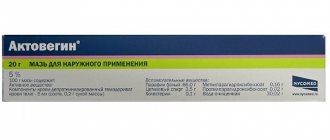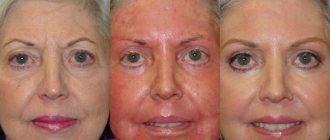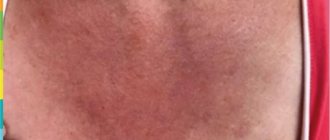The beauties of Ancient Egypt used peeling to cleanse their skin. This word is translated from English as “cleansing, removing the husks.” Cosmetologists call the process during which the top layer of dead cells, along with some living cells, is removed and exfoliated, exfoliation.
As a result, the face returns to youth, attractiveness and a healthy appearance. But in order for beauty to shine faster, the cells that are renewed and work intensively during the period after peeling need to be helped. And this is done with the help of creams and ointments.
What types of peelings are there?
Dead cells are removed by acting on one of three skin levels - this is how peelings differ in depth of penetration.
Superficial, low-traumatic peeling whitens age spots and refreshes the skin without affecting the sensitive layer. Sometimes this type of peeling is used to prepare for cleansing the middle layers of the skin.
The rejuvenating process of medium peeling encourages cell renewal, causes collagen formation and helps lymph flow. Medium peeling is used by girls from 25-27 years old, for which they prepare the skin for the procedure for 2 weeks.
The aggressive deep peeling procedure is compared to plastic surgery, which smoothes out fine and deep wrinkles, eliminates acne marks, scars and evens out the surface of the skin.
Deep peeling, which requires anesthesia, is done using hardware or chemical methods only in a cosmetology clinic.
Types of complications and ways to eliminate them
It is no secret that peeling can cause serious complications that are dangerous not only for the skin, but also for health in general, so before you decide not to perform it, you should definitely study all the available contraindications.
Among the most common complications are:
- hyperpigmentation, characterized by the appearance of dark brown spots on the skin resulting from exposure of the damaged epidermis to harmful ultraviolet radiation. For this reason, this type of peeling is recommended in late autumn or winter, when solar activity is low. It has been noted that a procedure performed using kojic or retinoic acids can provoke the appearance of age spots. The same effect will come from the independent use of essential oils of lemon, orange, bergamot, lavender and others;
- allergic or individual intolerance reactions (rejection of peeling composition by skin cells) occur when there is an existing or congenital predisposition to this pathology. To avoid such a complication, it is necessary to do a skin test in advance for the composition chosen for the manipulation. In addition, it will be necessary to use exclusively hypoallergenic cosmetics during the entire recovery period, eliminating the possibility of such a reaction. In cases where an allergy does begin, it is necessary to visit a doctor who will prescribe effective antihistamines (external and internal);
- the formation of acne may indicate insufficient, incorrect or poor care of the treated skin. If they appear, you should immediately contact a dermatologist who can prescribe qualified complex treatment with antibacterial, anti-inflammatory, sebostatic or zinc-containing drugs;
- Scars and cicatrices are usually formed when the crusts that form during the healing period of the skin are torn off. This process can become even more complicated when infection penetrates under the damaged area of the epidermis, followed by suppuration and the formation of liquid exudate. In order to heal wounds, as well as suppress inflammation, the doctor prescribes antibiotics and drugs with an active regenerative effect.
It is strictly forbidden to pick off scabs on the face, as this is a direct path to the appearance of scars and scars that are difficult to treat even the most expensive treatment!
With strict adherence to all the cosmetologist’s recommendations, sterility conditions, antiseptic treatment and proper care, the medium peeling will be successful, and the skin of your face will become renewed and noticeably rejuvenated!
Why do you need special skin care after peeling?
Peeling procedures end with a painstaking process of restoring the skin surfaces. Sometimes, if you neglect the recommendations given by the cosmetologist, even with complications.
During a peeling session, the skin receives physical and chemical trauma, which is manifested by active peeling, itching and redness.
The weakened tissues of the upper layer become sensitive and susceptible to all kinds of infections. Such skin cannot cope with recovery without special protection in the form of creams and ointments.
What problems will you face after peeling:
- With peeling, the strength of which is influenced by the applied composition;
- With swelling of the nose, neck, décolleté, if the skin is thin and sensitive;
- With the appearance of pimples on problem skin;
- With age spots and freckles, if there is no sun protection;
- With a rash – a manifestation of an allergic reaction;
- With scars or scars, when the crusts are removed independently.
Therefore, it is so important to choose the right care product and remember to apply it.
Rules of application
Post-peeling foundation from Christina is recommended for use after deep peelings and other active cosmetic procedures with a noticeable rehabilitation stage. The substance can be used daily on a regular basis to camouflage and protect the skin of those who are dissatisfied with the condition of the skin (excessive rashes).
It is better to coordinate the scheme of use of the foundation product with the treating cosmetologist. Typically, this option is prescribed for use during the rehabilitation period after aggressive procedures. Start using the product immediately after performing Rose de Mer peeling (when carrying out procedures with other substances, the timing will be determined by the cosmetologist).
The cream can be used for any skin type. Regular use is suitable for oily skin; for dry, flabby, sensitive skin - only as post-peeling care prescribed by a doctor.
The product is distributed in any convenient way: with fingers, sponge, brush. Before application, it is recommended to place a sufficient amount of the substance in the palm of your hand. The thick cream softens under the influence of heat, making the product easier to apply evenly.
To obtain a thin layer of foundation, it is better to use your fingers. Using your hands will help you distribute the substance more evenly and achieve a natural effect. A brush or sponge is used to create a dense base. The smears are placed carefully. It is important not to injure delicate tissues.
The tonal cover product Christina is available in a single color. In the jar the product looks dark and often “scares” consumers. During application, the substance has a reddish tan tint, but quickly turns red and adapts to the natural skin tone.
For a very pale natural color of the integument, the option may be truly dark.
Christina foundation cover cream is applied only to previously prepared skin. Before using the substance, you need to wash your face, treat your skin with toner, and apply a light moisturizer.
To remove foundation, regular washing with a light cleanser (gel, foam) is not enough. Makeup removal is carried out using a specialized composition with a delicate effect. The use of aggressive substances and excessive skin friction are excluded.
What components should be contained in post-peeling products and why?
When choosing post-peeling moisturizers, it is recommended to purchase creams and ointments with substances that help the skin barrier to recover more quickly. In addition, with components that accelerate skin healing and enhance the rebirth of new cells.
And also - with antioxidants.
The basis for cream and ointment should be thermal water.
Cosmetologists advise using the following products:
with hyaluronic and fruit acids;- with amino acids and antioxidants;
- with collagen and alginates;
- with vitamins A, B, C, E, urea and lanolin;
- with natural plant extracts and oils;
- with aloe and algae extracts.
Natural components of medicinal creams and ointments relieve discomfort, moisturize and eliminate tightness. More often, such products are prescribed by a cosmetologist.
Important! You cannot use creams with silicones, parabens and artificial dyes, with fragrances and sodium sulfate laureate, with mineral oil.
General rules and recommendations for the recovery period after peeling
After going through the peeling procedure, the main thing is to moisturize and nourish the injured skin, as well as stimulate regeneration.
In addition to these recommendations, you should definitely adhere to other rules:
- Washing is allowed after 24 hours if the peeling is superficial. Medium peeling imposes such a ban for 3 days and allows only warm acidified water. Deep cleansing allows washing on the 5th day.
- Drying with a towel is not allowed; cosmetic wipes should be used to blot moisture.
- Wash with sulfate-free foams (pH 5) and lubricate the skin with medicated cream or gel.
- On the 5-6th day, apply soothing herbal compresses.
- Do not use alcohol-based products. Purchase anti-inflammatory and bactericidal ointments and creams only in pharmacies.
- Use moisturizing, nourishing creams and alginate masks (made from brown algae).
- Use sunscreen with a UV factor of at least 30.
- Applying makeup is allowed after 14-15 days. The foundation should have an anti-comedogenic effect.
- For two weeks you should not drink alcohol, salty or spicy foods, do not go to the bathhouse or sauna, do not sunbathe, and do not go to sports training.
- To restore hydrobalance, you need to drink clean water - 1.5-2 liters per day.
- If the skin condition worsens, antihistamines and antibiotics are prescribed.
- It is forbidden to use a scrub or forcefully remove a layer of crusts.
If peeling is done by a professional and proper care is taken at home, the skin will recover in a short time and complications will not appear.
Recommendations from cosmetologists
- Is it possible to apply foundation after peeling? - No you can not. This risks skin infection. In addition, the foundation will not cover up severe peeling, but, on the contrary, will emphasize them even more.
- How to quickly remove facial redness? – For 1.5 – 2 weeks you should give up spicy and fatty foods, alcohol consumption, sports activities and visiting the sauna. These actions dilate the blood vessels, so the redness goes away much more slowly.
- Is it possible to remove peeling on your own? – Under no circumstances should you solve the problem of facial peeling on your own. Additional abrasives to speed up the renewal process are prohibited. They can penetrate into the deep layers of the skin, causing scars that will be very difficult to remove.
- If you have the slightest suspicion of complications, you must immediately make an appointment with a cosmetologist. There is no need to wait for the problem to go away on its own. It often happens that a complication goes into a chronic stage without timely intervention.
Peeling helps renew the skin, filling it with health and radiance. At the same time, the procedure is quite complex, as it affects the deep layers of the epidermis.
Therefore, during the recovery period you need to be extremely careful and careful. You should always follow the recommendations given by a cosmetologist
Do not overuse cosmetics or self-medicate. Peeling is a complex procedure, which means its negative consequences can become irreversible.
Incredible! Find out who is the most beautiful woman on the planet in 2020!
Question: Is it true that after using peeling you can’t use foundation, powder and blush for some time? Can products such as Skin Radiance Serum and Peeling Mousse be used in parallel with foundation? And is it possible to use BB cream after peeling? After all, it also slightly masks skin imperfections.
Experts' answer: It all depends on the peeling used. There are several types of peelings: salon and for home use. Peels for home use (with a low - up to 10% - content of alpha hydroxy acids (AHA)) are of the superficial type. After their use, there is no damage to the skin, so there are no restrictions on the use of makeup products.
Peeling procedures carried out in the salon come in several types: superficial, medium and deep. After superficial peeling there are no restrictions on the use of foundation. But after peeling, some peeling of the skin is possible, and it is better to apply foundation after the skin has recovered. But after a medium or deep peeling done in the salon, foundation can be used only after the skin has completely healed.
The “Skin Radiance” (1727) and “Peeling Mousse” (1073) products are home use products. There are no restrictions after using them, but, for example, in the summer, after use, it is advisable to use a cream with a small SPF.
Oxygen BB cream is not only not harmful, but even useful after peeling. It contains subliskin, an oligosaccharide whose chemical nature is similar to those found in our skin. It allows thin, fragile and damaged skin to resist the negative effects of the environment; helps the skin to independently synthesize the necessary components and recover; prevents the formation of wrinkles; increases skin elasticity and density.
Plankton extract provides a mattifying effect. Betaine has pronounced moisturizing and conditioning properties, reduces moisture loss, and can reduce the irritating effect of other ingredients.
And of course, our Aquaftem and liposomes with DST-H, the action of which everyone knows, primarily heal small wounds and cracks in the skin, promoting its restoration.
As for the decorative BB cream, which will go on sale in February 2014, it will also contain ingredients to protect and restore the skin.
Repair Complex CLR PF – stimulates DNA restoration, very effectively protects the skin from damage, and reduces the risk of photoaging.
D-panthenol - effectively moisturizes, soothes irritated skin and accelerates recovery processes, increases the production of protective pigment and reduces the damaging effects of sunlight.
Allantoin – promotes cellular regeneration, weakened under the influence of external factors, successfully relieves irritation and inflammation. Has very good moisturizing properties.
When can you start using creams and ointments?
After the peeling procedure, swelling, peeling, crusts are visible, the skin begins to heal.
Attention! During this period, it is allowed to use only medicinal creams and ointments with anti-inflammatory and wound-healing properties, which are recommended by a cosmetologist. During the first 7 days, cells actively divide, new fibers are formed, which requires moisture and nutrients. At this stage, it is necessary to use products that help wounds heal, soothe inflammation and soften the skin.
On the 3rd day, apply a moisturizer suitable for your skin type to your face, which is tight with dehydration. After 5-7 days, moisturizing with the help of natural masks and decoctions, and the use of nourishing cream are allowed.
Important! If peeling was done in winter, use a nourishing cream more often than a moisturizer.
When can you use regular cosmetics?
Patients often ask their cosmetologists the question: is it possible to use foundation and makeup after facial peeling, as well as apply skincare cosmetics. While cosmetologists strongly recommend holding off on using decorative cosmetics, regular skin care cosmetics are necessary for the skin. Regardless of the degree of penetration during the procedure, the skin needs daily hydration and nutrition. If you can’t touch your face at all on the first day, then starting from the second day you can use gentle care. The best option would be if the cosmetologist himself prescribes a line of skin care products. If there were no recommendations, then the general rules for choosing cosmetics are as follows:
- In the first two weeks, you need to exclude any abrasive products (including film masks);
- It is allowed to use only proven and familiar cosmetics; testing new brands may cause an unexpected reaction on the skin;
- You can include a cream with SPF protection in your morning care;
- During the recovery period, it is best to use skincare products labeled sensitive (for sensitive skin) or pharmaceutical products. Such cosmetics have the most gentle and beneficial composition.
Scheme - how to properly apply cream or ointment
In order to quickly revive the skin, when applying a cosmetic product, you should follow these rules:
- Treat the skin with a toner that does not contain alcohol.
- Apply a thin and even layer of cream with gentle, slow movements, moving upwards and to the sides, and also taking into account the direction of the massage lines.
- The product is not rubbed in, but distributed gently with light superficial movements.
- When there are a lot of crusts, the cream is applied 5 times a day. Once the dead skin comes off, two times is enough.
- You will have to use sunscreen or emulsion for 2-3 months before leaving the house.
Carefully! Quick, hasty strokes cause harm to the skin - stretch and injure.
How to use the scrub
So, you purchased or prepared your own body scrub. How to use it? There are several simple rules for using the product at home. Do not apply the composition to dry skin. It is recommended to take a bath or at least a shower first. Then the skin will steam, and the procedure will be more effective. Then you need to take a small amount of scrub and massage the entire body or certain areas with circular movements.
As necessary, you need to add the amount of cosmetic product. It is advisable to pay more attention to problem areas, as the procedure allows you to fight cellulite. Since peeling products contain various beneficial substances, after completing application to the skin, do not rush to wash off the body scrub.
How to use it correctly to get maximum benefit? Should be kept on the skin for 10 minutes. This time is enough for all nutrients to penetrate into the epidermis. The scrub is washed off with warm running water. It is recommended to complete the procedure by applying a nourishing or moisturizing lotion or cream.
TOP 13 creams and ointments for application after peeling
Mandatory care after exfoliation includes the application of moisturizing and soothing creams, the choice of which affects the speed of wound healing and the reduction of discomfort.
D-panthenol
Cream with dexpanthenol or provitamin B5, coenzyme.
Regenerates, heals, and copes with redness and itching in a short time.
Dexpanthenol with vitamin B5
The ointment improves cell metabolism and normalizes protection from external influences.
Compacts collagen fibers and restores tissue and water balance, helps with irritation.
Bepanten
Bepanten ointment is used after damage with medium and deep peeling. The dexpanthenol substance penetrates the tissue, becoming pantothenic acid.
The ointment is useful for accelerating regeneration, healing microcracks and eliminating irritations. Apply a thin layer with light rubbing, first 5 times, then in the morning and evening.
Solcoseryl
Solcoseryl ointment or gel is used after chemical peeling. With blood proteins from calves.
Helps saturate cells with oxygen and produce collagen, enhancing regeneration and accelerating healing. Reduces swelling and inflammation. For post-peeling care and complications with burns.
Vegefarma Cream
Vegefarma Cream is used after laser and chemical peeling. Contains rapeseed and sunflower oil, milk proteins, chamomile and fireweed flower extracts.
Antibacterial, fights inflammation, moisturizes. Used to prevent infections. Relieves redness and irritation.
Baby cream
Regular children's cream for use after superficial and medium peeling 7-10 days after the procedure.
With plant extracts and oils, natural animal fats, beeswax, silicon dioxide, kaolin and other substances. Nourishes, moisturizes, helps protect the skin during sudden temperature changes.
Traumeel
The ointment contains calendula and witch hazel, echinacea and yarrow, chamomile and daisy, arnica, St. John's wort and belladonna.
Anesthetizes, relieves inflammation, irritation and discomfort. Removes swelling with redness. Corrects complications.
Methyluracil
Methyluracil ointment is used after deep peeling or if complications arise. Protects the skin from ultraviolet radiation, promotes healing by accelerating cell regeneration. Relieves inflammation.
Hydrocortisone ointment
Hydrocortisone ointment for treatment after skin trauma by medium and deep peeling. With the hormone hydrocortisone, lanolin, pentol and stearic acid.
After applying the ointment, the skin does not itch, redness and swelling disappear. Antiallergenic agent.
Christina
Protective cream Christina with zinc oxide, shea butter, rosehip and jojoba. With carnauba wax, red clay, alaria extract, vitamins A and E and bisabolol.
Regenerates cells, protects against UV rays, eliminates rashes on oily skin. For a tonal effect. Apply to problem skin of oily and dry type.
Terra mater
Terra mater cream is used after acid peeling and mechanical cleaning. Contains centela asiatica, collagen and vitamin complex.
Moisturizes, gives calm, after which redness and acne disappear, the skin heals faster. Easily spread over cleansed skin and wait 5 minutes.
Bioderma sensibio forte
Bioderma sensibio forte (Sensibio Forte) is useful after laser peeling. With vitamin A and active natural substances.
Hypoallergenic, moisturizing, relieving irritation and inflammation. Apply day and evening to sensitive skin in case of irritation.
La Roche-Posay Hydreane
Composition of moisturizing cream for dry and very dry skin “La Roche-Posay Hydreane” with hydrolipids and glycerin, black currant oil, apricot kernels, coriander and thermal water enriched with selenium. Contains karite butter and bio oils.
Soothes, nourishes and moisturizes. Restores tissue. For dry skin, apply to face and neck twice daily.
Effect of peelings on the skin
Peels are varied, but they operate on the same principle - they destroy epidermal tissue, as a result of which the regeneration processes of skin cells are activated. This is how the skin is renewed and rejuvenated.
What happens to the epidermis - it perceives tissue damage as a signal to launch restoration processes, the active synthesis of collagen fibers and other structural elements of cells begins.
Expert opinion
Anastasia Zaslavskaya
Dermatologist, cosmetologist
After peeling, the face goes through a long recovery period, during which careful and careful care is needed. Even a slight negative effect on the bare surface of the skin can cause complications and defects, so it is necessary to eliminate or at least minimize harmful factors.
A harmless walk down the street on a sunny day or taking a bath can cause a significant deterioration in the condition of the skin.
To minimize the harmful effects, cosmetologists advise peeling before the weekend. In the two days that a woman spends at home, her skin will be more or less restored. In order for regeneration to proceed faster, it is necessary to follow the advice of a cosmetologist and use prescribed healing agents.
Particular care should be taken when caring for your face after deep peeling. But even after superficial exposure, side effects may occur, especially if the skin is dry and prone to irritation.
During the recovery period, the skin looks unsightly. But there is no need to worry:
- Pimples, if they are not profuse. This phenomenon is often observed on the first day after peeling. To get rid of the defect, the cosmetologist prescribes vitamin complexes and antibiotics.
- Peeling is a normal reaction observed after any exfoliation. This removes the outer dead layer of skin. It is absolutely forbidden to touch the crust or peel it off; it will gradually peel off on its own. If the patient accidentally or deliberately tears off the flaky tissue, scars may remain in this area. You can only remove the loose edge by carefully cutting it off with clean scissors.
- Redness is a consequence of a burn caused by chemical exposure. The tissues recover on their own after a few days.
- The swelling also disappears on its own. How long it lasts depends on the intensity of exposure: after superficial exfoliation, 4–5 days, after deep exfoliation, about a week.
You need to sound the alarm and immediately go to a dermatologist when the following symptoms appear:
- inflammation;
- cracking of the skin due to insufficient moisture;
- excessive pigmentation associated with lack of ultraviolet protection;
- erythema;
- allergic reaction;
- herpetic rash;
- scarring.
When do you need additional SPF and how to choose it?
Sunscreen is applied to prevent pigmentation before leaving the house, because ultraviolet radiation passes through even dense clouds.
To protect the skin, a product with SPF 50 is suitable, which means that only 1% of the rays will reach the skin. This cream is used for another 2 months after the skin has healed.
3 products with SPF suitable for facial skin after peeling
The sunscreen SPF 50 “Sublime Sun” (L'Oreal Paris) contains jasmine extract and vitamin E. The product moisturizes and rejuvenates the skin, prevents the synthesis of melanin, which inhibits the appearance of hyperpigmentation.
Anti-aging cream “Medium Holy Land Age Defense” (CC Cream SPF50) consists of gingko biloba extract, vitamins E, C, citric acid, including green tea leaves. These substances accelerate regeneration, cope with inflammation and redness.
Anthelios La Roche-Posay cream is recommended for those with sensitive and irritated skin. The product reliably protects against ultraviolet radiation and softens fabrics.











